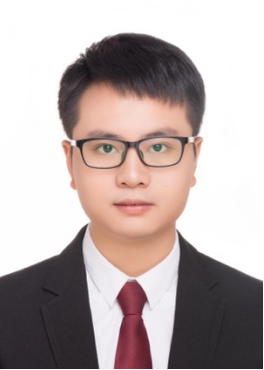
魏辉
职称/头衔:副教授、硕士生导师。
E-mail:weihui@hainanu.edu.cn
● 个人简介
2024.03-至今,海南大学,高聘副研究员
2019.09-2023.12,厦门大学,环境科学,理学博士
2016.09-2019.06,中国科学院水生生物研究所,动物学,理学硕士
● 研究方向
1) 重金属在珊瑚礁区的地球化学循环及其生态毒理效应研究;
2) 全球变化下海洋新污染物对珊瑚的影响及其机制;
3) 造礁石珊瑚-虫黄藻共生体对全球变化的快速适应研究;
4) 浮游桡足类对近海情境下海洋酸化和重金属污染的适应性研究。
欢迎具有海洋科学、环境科学、生态学、计算机基础的同学报考,将会提供全方位的科学研究培养规划,以及“手把手”的实验技能(生物信息学、分子生物学等)指导。
● 科研项目与课题
1. 国家自然科学基金委员会,青年科学基金项目,浮游桡足类对近海情境下高pCO2和镉污染的快速适应研究,2025-01至2027-12,30万元,项目,主持。
2. 海南大学,科研启动经费项目,全球变化下汞污染对造礁石珊瑚与共生微生物的影响及其机制,2024-03至2029-03,30万元,项目,主持。
● 论文与专著
1. Zhang WP#, Wei H#, Zhang SF, Zhang SY, Zhou Y, Sun WJ, Lee JS, Wang MH*, Wang DZ*, 2024. Elevated temperature as the dominant stressor on the harmful algal bloom-causing dinoflagellate Prorocentrum obtusidens in a future ocean scenario. Science of The Total Environment, 31, 175946. (Co-first author, IF=9.8)
2. Xie D#, Wei H#, Huang YH, Qian J, Zhang Y, Wang MH*, 2024. Elevated temperature as a dominant driver to aggravate cadmium toxicity: investigations through toxicokinetics and omics. Journal of Hazardous Materials, 474, 134789. (Co-first author, IF=12.2)
3. Wei H, Qian J, Xie ZX, Lin L, Wang DZ*, Wang MH*, 2022. Diel fluctuation superimposed on steady high pCO2 generates the most serious cadmium toxicity to marine copepods. Environmental Science & Technology, 56, 13179-13188. (IF=11.4)
4. Wei H, Xie DM, Wang DZ*, Wang MH*, 2023. A meta-analysis reveals global change stressors potentially aggravate mercury toxicity in marine biota. Environmental Science & Technology, 59, 219-230. (IF=11.4)
5. Wei H, Bai ZA, Xie DM, Chen Y*, Wang MH*, 2021. CO2-driven seawater acidification increases cadmium toxicity in a marine copepod. Marine Pollution Bulletin, 173, 113145. (IF=5.8)
6. Wei H, Cai WJ, Liu HK*, Han D, Zhu XM, Yang YX, Jin JY, Xie SQ, 2019. Effects of photoperiod on growth, lipid metabolism and oxidative stress of juvenile gibel carp (Carassius auratus). Journal of Photochemistry and Photobiology. B, Biology, 198, 111552. (IF=5.4)
7. Wei H, Li HD, Xia Y, Liu HK*, Han D, Zhu XM, Yang YX, Jin JY, Xie SQ, 2019. Effects of light intensity on phototaxis, growth, antioxidant and stress of juvenile gibel carp (Carassius auratus gibelio). Aquaculture, 501, 39-47. (IF=4.5)
8. Zhao FK, Huang YH, Wei H, Wang MH*, 2024. Ocean acidification alleviated nickel toxicity to a marine copepod under multigenerational scenarios but at a cost with a loss of transcriptome plasticity during recovery. Science of The Total Environment, 27, 173585. (IF=9.8)
9. Niu YL, Wei H, Zhang Y, Su J*, 2024. Transcriptome response of a marine copepod in response to environmentally-relevant concentrations of saxitoxin. Marine Pollution Bulletin, 1, 116546. (IF=5.8)
10. Xie DM, Wei H, Lee JS, Wang MH*, 2022. Mercury can be transported into marine copepod by polystyrene nanoplastics but is not bioaccumulated: An increased risk? Environmental Pollution, 303, 119170. (IF=8.9)
11. Xie DM, Zhang HM, Wei H, Lin L, Wang DZ, Wang MH*, 2023. Nanoplastics potentiate mercury toxicity in a marine copepod under multigenerational exposure. Aquatic Toxicology, 258, 106497. (IF=4.5)
12. Yin XH, Zeb R, Wei H, Cai L*, 2020. Acute exposure of di(2-ethylhexyl) phthalate (DEHP) induces immune signal regulation and ferroptosis in Oryzias melastigma. Chemosphere, 265, 129053. (IF=8.8)
13. Cheng LM, Bai ZA, Wei H, Chen Y*, Wang MH*, 2023. High and diurnally fluctuating carbon dioxide exposure produces lower mercury toxicity in a marine copepod. Marine Pollution Bulletin, 192, 115016. (IF=5.8)
14. Liu HK, Li HD, Wei H, Zhu XM, Han D, Jin JY, Yang YX, Xie SQ*, 2019. Biofloc formation improves water quality and fish yield in a freshwater pond aquaculture system. Aquaculture, 506, 256-269. (IF=4.5)